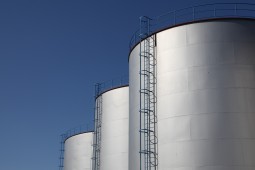Q. What are the requirements for PCBs handling and disposal? What are the appropriate EPA and state agency notification requirements when the PCBs at greater than 50 parts-per-million (ppm) are discovered in an aboveground storage tank (AST) storing Fuel #2 and located at the Petroleum Bulk Storage Facility?
A. An aboveground storage tank (AST) storing (diesel) fuel No. 2 that you note has been “discovered” to contain polychlorinated biphenyls (PCBs) at levels greater than 50 ppm requires handling and disposal of the tank and its contents in compliance with the Toxic Substances Control Act (TSCA) regulations at 40 CFR 761. New Jersey does not have any additional requirements for management of PCB wastes.
The PCB liquid. The PCB contaminated fuel must be disposed of in accordance with 40 CFR 761.60 which requires that PCB liquids at concentrations =50 ppm be incinerated in compliance with the incineration requirements of 40 CFR 761.70. However, if your PCB liquid is at a concentration of =50 ppm and <500 ppm, you may dispose of it in a high efficiency boiler meeting the standards of 40 761.71(b). (You did not mention whether the PCB concentration is 500 ppm or more.)
As the generator of the PCBs, you must use a hazardous waste manifest to transport the PCB-contaminated fuel to the disposal facility. The disposal facility is required to prepare a Certificate of Disposal for the PCBs and send a copy to you, the generator. This copy, as with the hazardous waste manifest copy, must be kept for 3 years.
The tank. The AST meets the definition of PCB Container which is “any package, can, bottle, bag, barrel, drum, tank, or other device that contains PCBs or PCB Articles and whose surface(s) has been in direct contact with PCBs.” Note that as a PCB Container, your tank must be marked with a label meeting the requirements of 40 CFR 761.40 and 40 CFR 761.45.
After the liquid has been removed, decontamination of the tank should follow one of the applicable procedures outlined in 40 CFR 761.79. You may want to follow the requirements of 40 CFR 761.79(c)(1) that involve flushing the internal surfaces of the container three times with a solvent containing <50 ppm PCBs with each rinse using a volume of the flushing solvent equal to approximately 10 percent of the PCB Container capacity. If your AST is metal, another choice is to use thermal processes to decontaminate metal surfaces in contact with PCBs in accordance with 40 CFR 761.79(c)(6).
A PCB Container used to contain liquids with PCBs at a concentration less than 500 ppm can be disposed of as a municipal solid waste. A PCB Container of liquids with PCB concentrations at 500 ppm or greater must be disposed of in a chemical waste landfill in accordance with 40 CFR 761.75. In either case, the PCB Container must first be drained and the PCB liquid must be properly disposed of.
Notification. Generators of PCB waste who “use, own, service, or process PCBs” and who “own or operate PCB storage facilities” must notify the U.S. EPA of their PCB waste activities on EPA Form 7710-53. Your situation would suggest that you are exempt from this requirement at 40 CFR 761.205 but it would be prudent to contact the New Jersey Department of Environmental Protection (DEP) to confirm that you are exempt. Reporting required under 40 CFR 761.125 for spills of PCBs would not be applicable as your scenario does not meet the definition of “spill.”
For additional information on handling and disposing of PCBs, you will find the BLR regulatory analysis PCB Management to be helpful.

